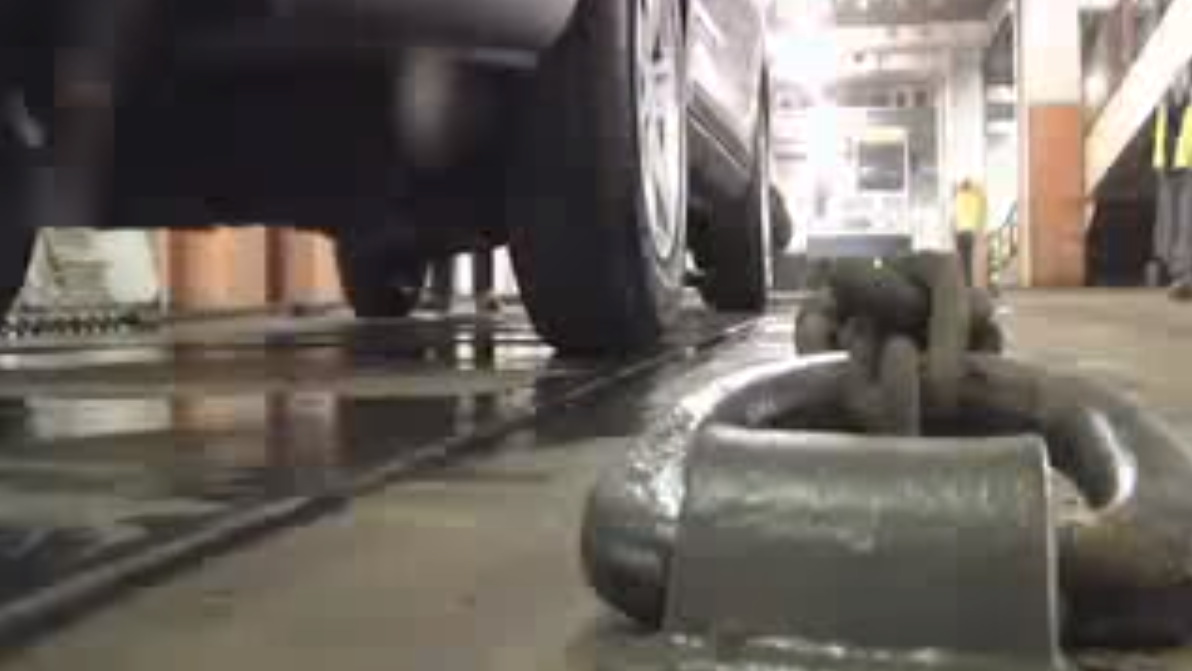"Domino Effect" of Lashing Failures Likely on El Faro

The Marine Board of Investigation hearings into the loss of the ro/ro El Faro continued Wednesday with testimony regarding her turbine lubrication system and her arrangements for cargo lashing.
Mark Gay, a former chief engineer aboard the El Faro, testified at length about the details of the vessel's main engine lubrication system. The crew reported the loss of propulsion due to lubrication issues before she went down, and the voyage data recorder bridge audio shows that her engineers were working to bring her engines back online. In emotional testimony, Mr. Gay said that the El Faro’s crew would have done everything possible to get her turbines running, even when water began flooding into the engine room. “You have a lot of good people doing whatever needed to be done to get this thing going and get out of harm's way," he said.
The El Faro’s lubrication system had a 1,500 gallon sump that fed a positive displacement pump. The class standards for the El Faro required the system to work properly when "permanently inclined to an angle of 15 degrees athwartship,” and in the hours before the El Faro’s sinking, her crew reported that she was listing at a steeper angle than they had ever experienced before. In questioning Wednesday, the board sought to determine the limits of the system’s capabilities and the steps needed to bring it back up if it went down.
Mr. Gay testified that if large amounts of air entered the lube pump – for example, if the vessel listed too far and the oil lay to one side of the sump – the pump would lose suction. Automatic switching would turn on an alternate pump, but if both pumps went down, the engineers would have only five to ten minutes to bring the lube system back online before the turbines would begin to shut down. Restoring suction would not be difficult, he said, assuming that there was oil at the intake.
Questions about the El Faro's lashings
Captain Phil Anderson and Captain Edward Walker, Jr. of the National Cargo Bureau provided testimony on the lashings used aboard the El Faro and her sister ship, the El Yunque, and suggested that it may not have consistently met standards.
"After reviewing photographs reportedly taken on board El Yunque and others accompanying a TOTE Lashing Manual for the [El Faro's] class of vessels, it appeared that there may also be a tendency towards lashing not being properly applied at times," Anderson and Walker reported in a written brief.
In questioning, Anderson raised doubts about whether the crew had been adequately trained on the lashing manual, and suggested that it was "highly questionable" whether the lashings employed on the El Faro would be effective in severe weather conditions – especially for heavy ro/ro trailers secured "off-button."
“We believe that it is probable that there was a cargo shift. In the event of any cargo shift, a domino effect would be likely to result in progressive lashing failure as shifting cargo overloaded adjacent lashings as the vessel rolled,” Anderson said. He cautioned that it was difficult to determine whether a cargo shift contributed to the El Faro's sinking.
